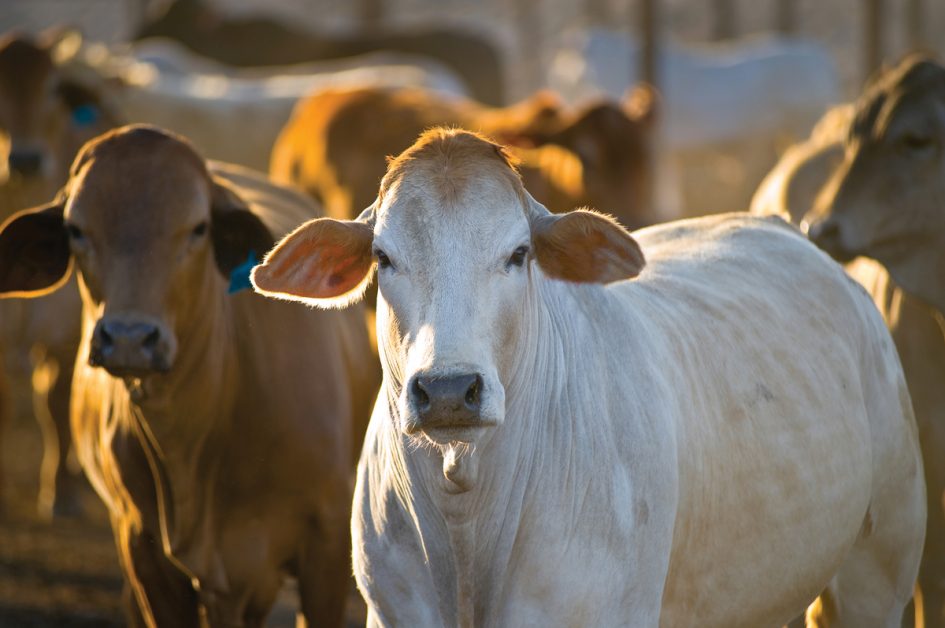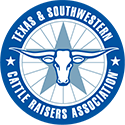Before Breeding Begins...
Producing a profitable calf crop takes proper planning, preparation and strategy.
By Nicole Lane Erceg
It may seem like calving season just ended, but it’s already time to begin preparations for the next calf crop. As breeding season looms in the near future, Todd Bilby, associate director of ruminant technical services at Merck Animal Health and specialist in cattle fertility and breeding, says it’s time to begin strategizing. While breeding scenarios vary from ranch to ranch, Bilby says formulating a plan can improve profitability and help guarantee a successful breeding season.
“The best approach to take is to apply Murphy’s Law to your breeding program — the idea that anything that can go wrong will go wrong,” says Bilby. “It helps you prepare for the hiccups and avoid revenue-stealing mistakes.”

Invest in insurance
Imagine finishing checking for pregnancy only to learn that half the herd is open and thousands of dollars are down the drain. This harsh picture is a reality for many producers who fail to regularly perform breeding soundness exams (BSE), also known as bull testing, before using bulls to breed. Bilby says that 1 in 10 bulls lack the ability to impregnate a cow and that one bull could spell extreme economic losses for a rancher.
Compared to the alternative, scheduling a veterinarian to come perform a BSE 30 days prior to breeding is a small price to pay for insurance that each bull is ready to work when needed. When performing a BSE, the veterinarian will examine scrotal circumference, physical ability of the bull for structural soundness and mobility and perform a semen evaluation test.
“Make sure you do the breeding soundness exam and have enough bulls and the proper balance of younger and older bulls that are functional,” says Bilby. “If you don’t do a BSE, you may find out your bulls didn’t work when it’s too late.”
Using bull testing as a risk management tool allows producers to ensure semen quality, physical soundness of the bulls and their ability to service a cow. Bull testing does not test for libido; however, Bilby says the examinations are worth discovering other bull issues before they become bigger problems.
“Failing to perform a BSE opens you up to a higher risk. The bulls may not be able to cover all your cows or could be shooting blanks, and that won’t do you any good,” says Bilby. “The problem is, you don’t find out until you are preg checking that you have cows that are open or that you’ll need to extend.”
Synchronizing pounds and profit
Herds that rely on artificial insemination (AI) also require coordinating lots of logistics before breeding season begins. To achieve a successful conception, lots of moving pieces must come together in perfect timing.
“You have to have a plan,” says Bilby. “You want to lay out on a calendar what days to give injections and what type and the number of injections that need to be given.”
Bilby recommends that breeders who haven’t used AI in the past consider whether the practice could potentially add profits to their operation. Using AI allows producers access to an expanded range of genetics, a shorter calving season and uniform groupings of calves. Bilby also cites added weaning weights on earlier born calves and the increased probability of breeding cows back in a shorter timeframe as additional reasons to consider the technology.
“Synchronization can bring a lot to the table,” says Bilby. “It helps you select high-quality genetics, cluster the calving season, open the opportunity to use sexed semen and cut down on bull costs.”
If considering the transition, Bilby says it’s easiest to synchronize and breed only a portion of the herd to begin with, then adjust the program to fit the needs of the individual ranch. Phasing the technology into the herd’s breeding strategies allows a rancher to ease into the program or test its profitability without having to make a drastic change.
“With today’s bull prices, I would recommend looking at synchronizing and how that could help herds in the long run,” says Bilby.
Estrus synchronization protocols for AI vary depending on the needs of the farm and even breed types. When setting up a program, Bilby recommends working with an AI technician and veterinarian.
“The most common mistake I see is that ranches just aren’t prepared,” says Bilby. “The proper thing to do is walk through the process in your head — including the number of cows that will be done in one day and the equipment and help that will be needed. Where I see a lot of plans fail is in the preparation and coordination process. It’s vital you have a plan in place.”
Fertility in first-timers
Strategies for first heifer pregnancies will also require extra attention before breeding season can begin. Bilby says heifers must be at 60 percent of their mature body weight before breeding and reach a body condition score of 6.
Bilby recommends monitoring heifers for proper development and, ideally, selecting heifers that were born earliest in the calving season out of the most historically fertile cows. However, phenotype doesn’t tell all. Before selecting heifers to breed, he recommends checking reproductive tract scores (RTS) and requiring a minimum RTS 3 to make the breeding list. By using an RTS system, Bilby says beef producers can potentially improve conception rates for virgin heifers.
“Select more heifers than needed for replacements, and breed heifers for no longer than a 65-day breeding season,” instructs Bilby. “Then sell the open heifers and always make sure to use a calving-ease bull.”
Creating the final checklist
As a plan begins to form for the breeding season, Bilby reminds producers not to forget the many vital chores that can impact a bottom line and prevent conception. By maintaining an emphasis on nutrition before breeding season, he says producers can meet the required body condition score of 5 for mature cows and 6 for heifers — before it comes time to breed. Pre-breeding vaccinations will need to be given, but ordering the correct vaccines and administering boosters will need to be on the to-do list.
Bilby also recommends prioritizing accurate record keeping, allowing for the opportunity to assess what strategies worked, and what was unsuccessful. It’s a mistake he says he’s seen many times, not maintaining the in-depth records that can help producers make more informed and data-driven decisions in the future, based on the needs of their herd.
Determining which breeding preparations and programs will best fit a ranch is an individual decision that is made best with help from outside resources. To assure a successful breeding program, Bilby advises producers to reach out to the thought leaders in the area and always partner with a local vet. From recommendations on the best choices for synchronization pharmaceuticals to the lineup of pre-calving vaccines that must be administered and preparing for the list of things that can go wrong, he says it helps to have a strategic plan, the right resources and a team in place who will help make sure it goes right. ❚
“Before Breeding Begins” is excerpted from the May 2017 issue of The Cattleman magazine.
